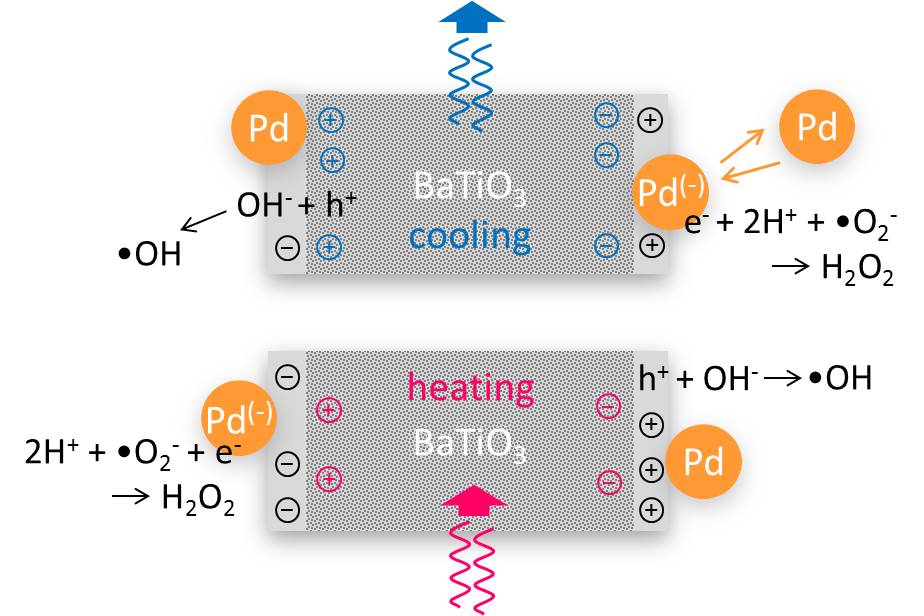The disinfection of bacteria by thermally excited pyroelectric materials in aqueous environments provides opportunities for the development of new means of sanitization. However, little is known about the formation of reactive oxygen species (ROS) at the surface of the thermally excited pyroelectric materials. To investigate the pyroelectrically driven ROS generation we performed OH radical specific measurements of thermally stimulated barium titanate nanoparticles in contact with palladium nanoparticles. Through electron spin resonance measurements with the spin trap BMPO (5-tert-butoxycarbonyl 5-methyl-1-pyrroline n-oxide) and fluorescence spectroscopy of 7-hydroxycoumarin, OH radical generation was detected, which confirms the hypothesis of pyroelectric ROS production. Since pyroelectric potential changes are insufficient for direct electrochemical OH radical generation, we propose a two-step chargetransfer model facilitated by intermittent contact between the palladium and the pyroelectric nanoparticles and the pyroelectric effect as the driving force for charge transfer.

The disinfection of bacteria by thermally excited pyroelectric materials in aqueous environments provides opportunities for the development of new means of sanitization. However, little is known about the formation of reactive oxygen species (ROS) at the surface of the thermally excited pyroelectric materials. To investigate the pyroelectrically driven ROS generation we performed OH radical specific measurements of thermally stimulated barium titanate nanoparticles in contact with palladium nanoparticles. Through electron spin resonance measurements with the spin trap BMPO (5-tert-butoxycarbonyl 5-methyl-1-pyrroline n-oxide) and fluorescence spectroscopy of 7-hydroxycoumarin, OH radical generation was detected, which confirms the hypothesis of pyroelectric ROS production. Since pyroelectric potential changes are insufficient for direct electrochemical OH radical generation, we propose a two-step chargetransfer model facilitated by intermittent contact between the palladium and the pyroelectric nanoparticles and the pyroelectric effect as the driving force for charge transfer.
